Technology of growing and caring for corn in the open field, agrotechnical conditions
Due to the intensive development of poultry and pig farming, corn is grown in our country in large volumes. At the same time, in addition to fodder, there are a large number of cereal varieties that are cultivated for human consumption. They are distinguished by more delicate grains and taste.
Such varieties are grown both in personal plots and in summer cottages. Today only one type of cereal is cultivated - sweet corn. A large number of varieties and hybrids of this species have been developed, suitable for both large-scale cultivation and small private farms.
For farmers and gardeners who decide to plant a crop on their farm, it will be useful to study how corn grows and what difficulties you may encounter when growing it.
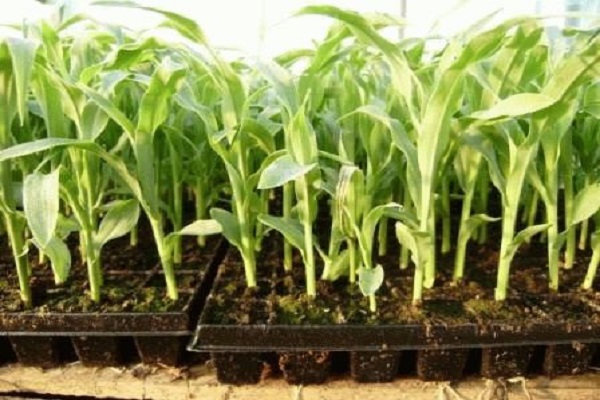
Soil preparation
Agrotechnology of corn includes soil cultivation, application of organic and mineral fertilizers, selection and preparation of seed material, sowing, plant care and harvesting.
Choosing the right site before planting corn is important. The culture grows well on black soil, loamy and sandy loam soil with good aeration and water permeability.
Corn is a light and heat-loving plant, so a well-lit area protected from the wind is suitable for it. When choosing a site, it is important to take into account that it does not grow well in too humid lowlands and in swampy areas. Better to choose a flat or elevated area.
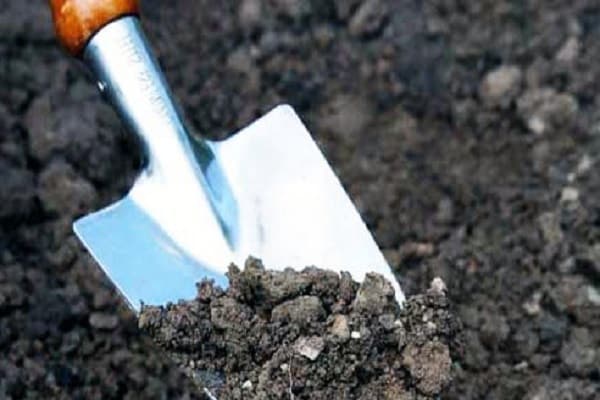
Corn absorbs a large amount of nutrients from the soil, therefore, in order to preserve its fertility, it is important to observe crop rotation and not cultivate the crop in the same place for 2 years in a row.
Growing corn outdoors begins with soil selection and preparation.
Site preparation before planting corn begins with harvesting the predecessors. Before wintering, the soil is fertilized, for which 20-30 kg of humus, 0.3 kg of superphosphate, 0.08-0.1 kg of potassium salts are introduced for every 10 m². Fertilizers are applied for plowing, the depth of which should be at least 25 cm, and preferably 30-35 cm.

In the spring, when the top layer of arable land begins to dry out, the area is loosened to the depth of seeding (5-8 cm). You can use a harrow or rake. This technique will improve the aeration of the soil, retain moisture in it, and accelerate seed germination.
Loosening is carried out diagonally to the direction of the arable land. If the site is abundantly overgrown with weeds, it will take 2 cultivation in the plowing field: the first - preliminary, to a depth of 8-10 cm, the second - presowing, to the depth of seeding.
When the soil warms up to + 10 ° C to a depth of 10-12 cm, a week before sowing, mineral preparations are introduced into the soil: 0.15-0.2 kg of nitrogen fertilizer per 10 m².It is loosened to a depth of 8-10 cm and leveled.
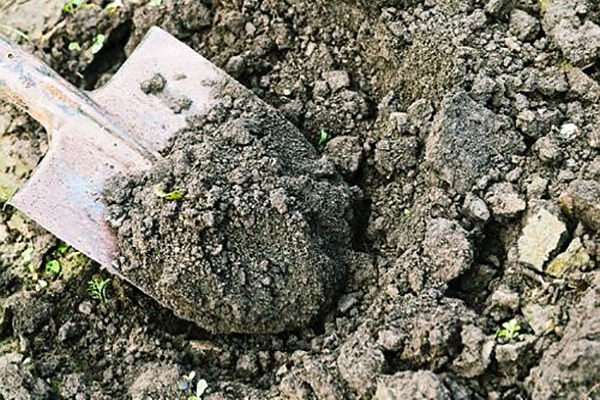
Growing from seed
Cultivation of a culture is possible in 2 ways: sowing directly into open ground or by means of seedlings, followed by planting on a personal plot. Each of the methods has advantages and disadvantages.
Growing corn in a seedless way does not allow for an early harvest, but planting maintenance is much easier. Plants in this case are more resistant to adverse environmental conditions.
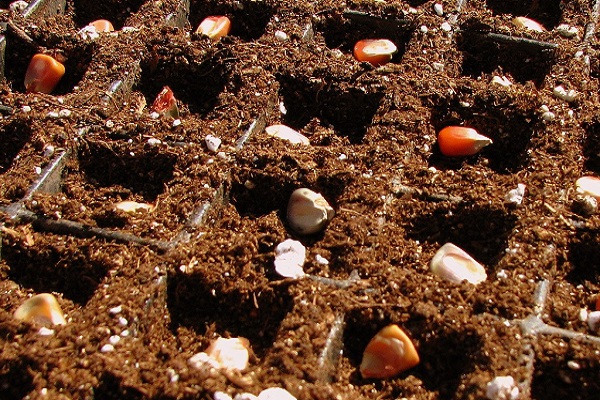
Preparing grains for sowing
When choosing a seed, the purpose of growing a crop should be taken into account. All hybrids and varieties are divided for cultivation into grain and consumption. The yield, taste and characteristics of corn cultivation depend on this.
For sowing, seeds of I and II classes are used, the germination rate of which is not less than 92%.
Pre-sowing grain treatment includes sorting, calibration, chemical treatment of seeds. The grains are calibrated for more uniform emergence. Sorting is carried out to reject seeds with defects. Dressing protects the seed from pests and diseases. All these procedures are carried out in special enterprises.
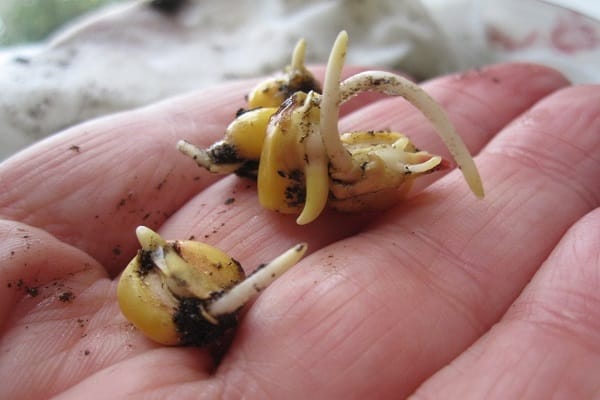
To improve germination, 7 days before sowing, the grains are subjected to air-heat treatment at + 25 ... + 35 ° C and good ventilation. Seed material is washed 2-3 days before sowing. In the process, unusable seeds emerge, which are removed. High-quality grain is wrapped in cheesecloth, poured with water at room temperature and kept until germination.
One more way preparation of corn seeds for sowing: they are kept in the sun for 5 days, and before planting, they are soaked in warm water (+ 45 ° C) for 1-1.5 hours. Then the grains are dried naturally.
Before planting, the seeds can be treated with mercuran or granosan against pests and various diseases.

The choice of varieties affects the sowing time. Corn for consumption on the cob, freezing and canning is sown in late April - mid-May, when the soil warms up to + 12 ° C and the threat of frost disappears.
Subject to agricultural techniques and suitable environmental conditions, seedlings should appear on the 12th day. For these purposes, early varieties are used. Corn for grain refers to late. It is more resistant to adverse weather conditions.
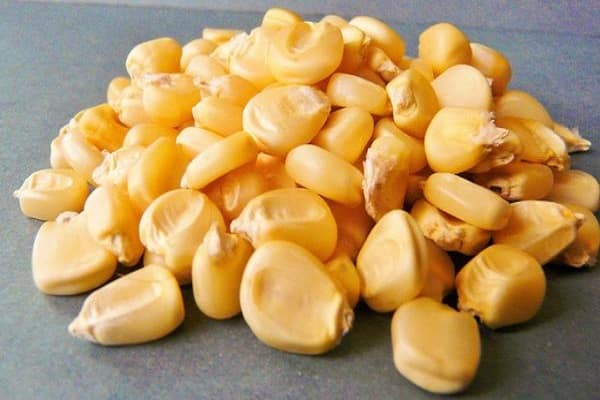
Sowing technology
The technology of growing grain corn involves 2 sowing methods: dotted and square-nested.
The main method by which corn is grown in the fields is dotted. In this case, the crop is sown in rows with row spacing of at least 70 cm and the distance between plants 20-25 cm.
In the fields, maize is sown with a SPCh-6M seeder with a pneumatic seeding unit of a disk type or with combined seeders SUPN-8, which simultaneously with seeds can apply mineral fertilizers.
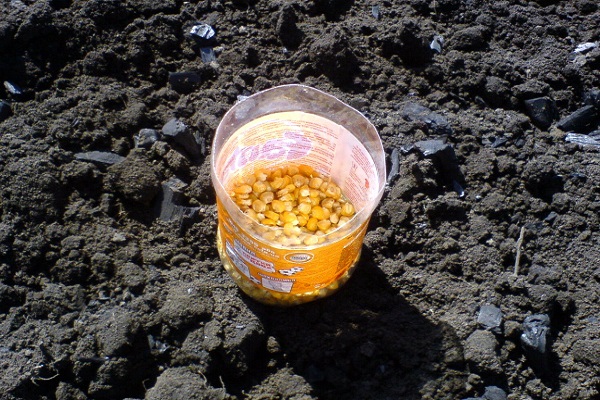
Another 1 method of sowing is square-nest, in which the row spacing is 70x70 or 70x90 cm.In arid regions and on poor soils, corn is sown with row spacing of 70x140 cm.In each nest hole, 1, 2 or 3 grains are laid.
After the appearance of seedlings, weak shoots can be pulled out. For planting corn in this way, SKNK-8 and SKNK-6 seeders with mechanical cellular-disk seeders are used. More often this option is used when planting seedlings.
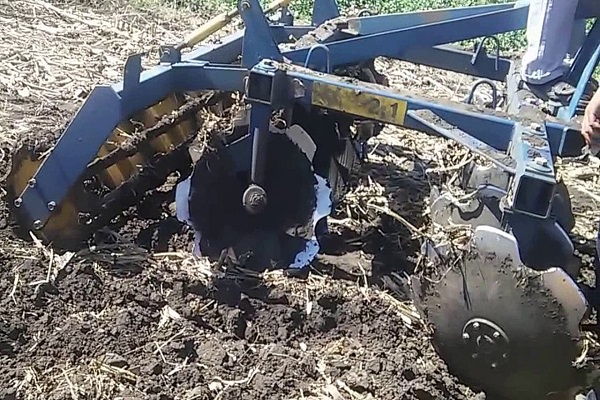
On the backyard, corn is sown in rows with a row spacing of 60 cm and a distance between plants - 40 cm.
Regardless of the chosen sowing method, you need to know how to properly carry out the work. Keeping the row spacing makes it easier to care for the plants and allows them to eat normally. The seeding depth is 6-8 cm. The soil should be well moistened and completely cover the grain.
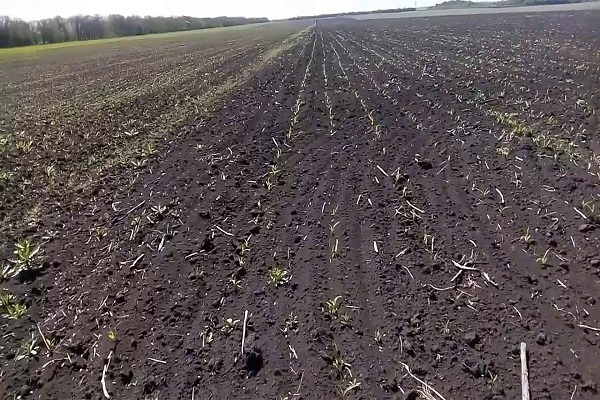
Growing seedlings
Cultivation of corn is also possible in seedlings.At the same time, leaving is significantly complicated, but it becomes possible to get a harvest as early as possible.
The seedling method is not suitable for use in large volumes due to the high labor costs. In the conditions of a summer cottage or a personal plot, it allows you to get the best results: good yields and high quality fruits.
Seeds for seedlings are sown at the same time as in open ground, after the same preparation. Humus or peat cups with a diameter of 12 cm are used as a substrate. This method will allow you to immediately grow seedlings isolated from each other, without diving, which will reduce the risk of damage to the root system. After all, corn does not tolerate this procedure.

For planting, you can use cassettes, divided into sections, or containers. In this case, the shoots are kept in a container until the root system completely fills it. The containers are filled with a mixture of sod substrate and humus or compost in a 1: 1 ratio. To increase the moisture content, a hydrogel is introduced into the soil.
Seeding depth - 3-4 cm, 2 pcs. in 1 hole. After planting, the substrate is moistened with a warm solution of Fundazole (4 g of the product per 10 l of water).

During the growing period, apply Polyfid, Terraflex, Master, Kemiru-hydro or other fertilizers, seedlings in the greenhouse require additional lighting with fluorescent or phytolamps. A week before planting, the seedlings are hardened in the fresh air.
After germination of seedlings, the sprouts are planted in open ground after 30 days. It's mid June. By this time, seedlings should have at least 3 leaves. In this case, choose a square-nested method of planting. The depth of the hole should be slightly more than a clod of earth with plant roots. After planting, the sprouts are watered and mulched.
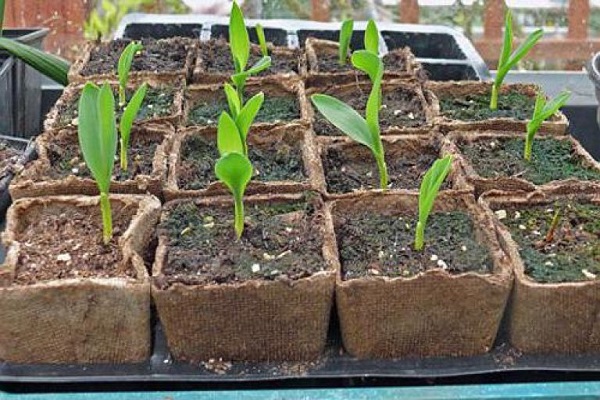
Care features
Caring for corn crops is reduced to regular watering, feeding and protection from pests and diseases.
Depending on the purpose for which corn is planted, the cultivation features differ.
The best predecessors for her are winter and spring grains, legumes, vegetables (early cabbage, tomatoes, melons, root crops).
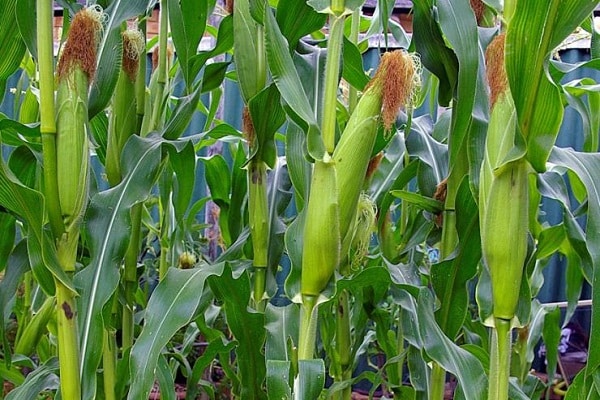
Watering
The irrigation regime depends on the agro-climatic conditions and the stage of plant development. During the growing season, corn uses moisture unevenly. Critical stages of development, when corn requires 2-4 liters of water per day:
- Stage 9-11 sheets. This is the period of active growth of green mass and the formation of the root system. Until 9 leaves appear, corn is not watered.
- Maize bloom - begins 10 days prior to emergence and ends 20 days after panicle opening. With a lack of moisture during this period, the yield may decrease by 50%.
- Grain formation stage.
- The period of milk ripeness of the grain.
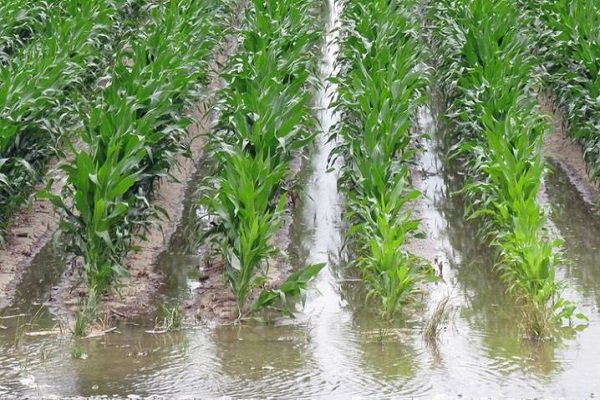
If the crop is grown in a dotted manner, drip irrigation is optimal, which allows maintaining the optimum soil moisture for corn - 70-80%.
Modern hybrids are more drought tolerant and recover faster after stressful periods. If the crop is grown in highly fertile soils, its water requirement is lower, so the amount of watering can be reduced.

How to feed?
Top dressing is applied at a given period - the ripening period of corn. The first time - at the stage of formation of 3-4 leaves, organic fertilizer is applied: a solution of mullein or chicken droppings.
The second time feeding is carried out at the stage of sweeping. At this stage of maize cultivation, root application of mineral fertilizers is carried out per hundred square meters: ammonium nitrate - 2 kg, superphosphate - 3-5 kg, potassium salt - 1-2 kg.
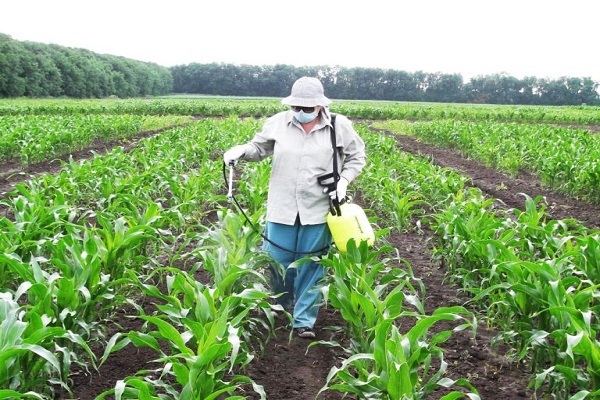
Potassium and phosphorus are especially important at this stage. The lack of these elements can be determined by the color of the corn stigmas and leaves. They brighten, acquire a yellow tint.For culture, elements such as magnesium, sulfur, zinc and calcium are important. Copper and zinc, if necessary, are introduced in the phase of 5-8 leaves mixed with urea at the rate of 10 kg per 200 liters.
Mineral preparations are added to the soil and by spraying. In particular, irrigation of plants with urea solution is effective 2-3 weeks before the appearance of panicles.
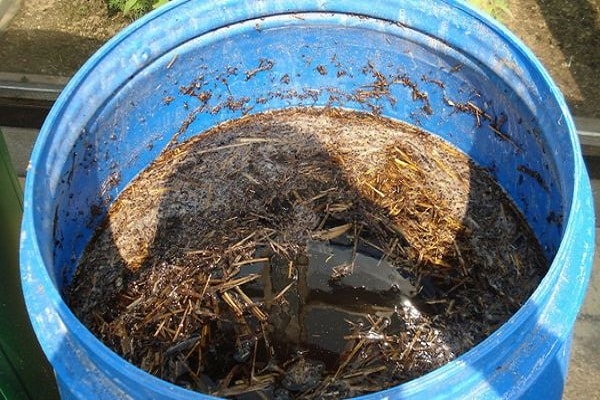
Diseases and pests
Fungal diseases are the most dangerous for corn; growing crops requires the prevention of various cereal infections.
Fusarium is one of the most common mycoses caused by various types of fungi of the genus Fusarium. The danger of this pathogen is that, as a result of its vital activity, toxins that are dangerous for people and animals accumulate in the tissues of the plant.
The fungus affects the ears, stems, young shoots, reducing the yield up to 60%. Fusarium on the cob appears at the stage of milky-wax ripeness of the grain and is accompanied by the appearance of pink bloom. Subsequently, the grains darken and collapse.
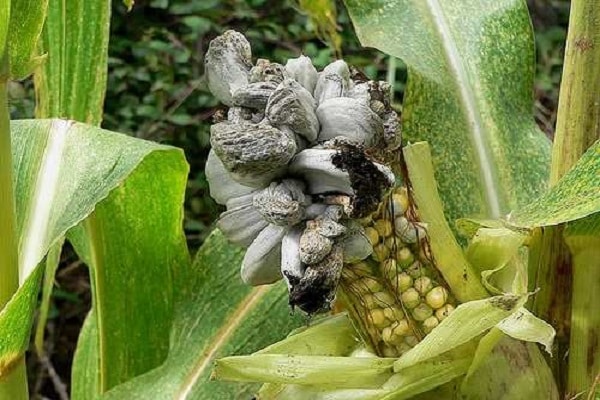
Even healthy kernels from an infected ear are carriers of fungal spores. When young stalks are affected, corn does not have enough vitality to develop, and the shoots die or do not yield. In mature plants, stem rot may develop, which is accompanied by softening and subsequent destruction of the stems. In this case, corn is in danger of death.
High soil acidity, high humidity and low air temperature, excessive crop density, and poor soil aeration contribute to the spread of the disease.
Rust is another cereal mycosis. The causative agent is activated from the second half of the summer. In this case, light yellow spots are formed on the underside of the leaf, which eventually turn brown and become covered with pustules with fungal spores.

With a high degree of infection, the stem also suffers. In this case, plants can dry out or lose about 20% of productivity.
Bubble smut is a common fungal disease of corn, which is accompanied by the appearance of neoplasms - gall on the leaves and ears, and sometimes stems and panicles. Prolonged drought contributes to the appearance of the disease.
After ripening, the galls disappear, infect the soil, which contributes to the spread of the disease, growing a crop in this field in the future only makes sense when choosing resistant hybrids.

To prevent diseases, grain is treated with fungicides before sowing.
The causative agent of the disease northern helminthosporiosis or necrosis is the symbiosis of chlamydospores and fungal mycelium. Due to infection, spindle-shaped gray spots appear on the leaves with a black border and a bloom resembling soot. Over time, the affected leaves die off. The development of the disease coincides with the beginning of flowering. High humidity contributes to infection.

The most common maize pests:
- Wireworms are the larvae of click beetles. Pests are often found in irrigated fields and during periods of high humidity. Roots eat up. Capable of destroying up to 90% of crops.
- The larvae of the scoop. There are many types of pests. Caterpillars eat cotyledon leaves and young shoots.
Various insecticides are used to protect crops. Prevention is high-quality agricultural technology: compliance with crop rotation, deep plowing before wintering, spring cultivation.
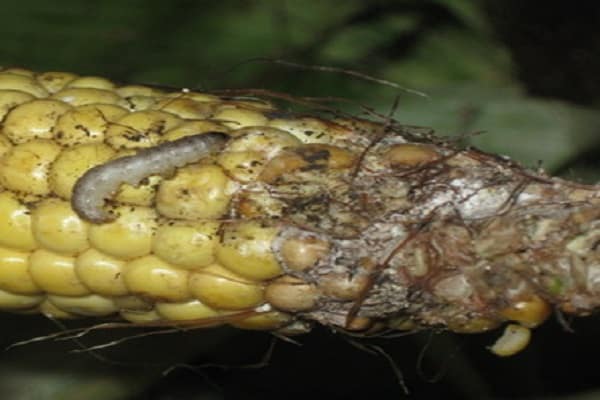

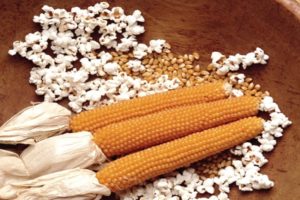

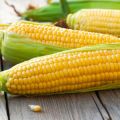
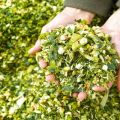
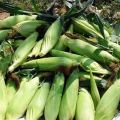
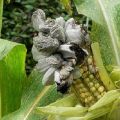
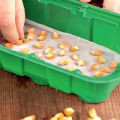
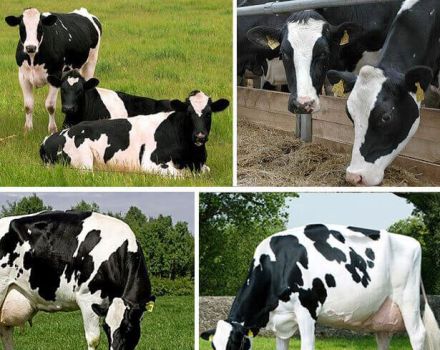

In addition to the correct agrotechnical measures, you also need to choose the right fertilizers.I have been using a plant growth bioactivator for the second year already. BioGrow, the harvest is much better.